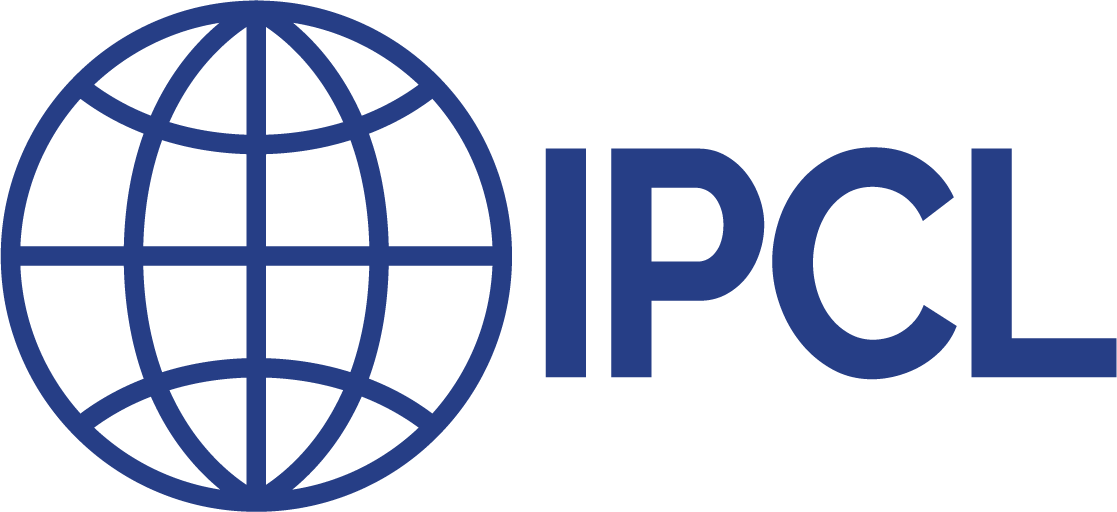Child Labor and Forced Labor Reports
Ukraine


Minimal Advancement – Efforts Made but Continued Law that Delayed Advancement
In 2024, Ukraine made minimal advancement in efforts to eliminate the worst forms of child labor. Despite the ongoing Russia-Ukraine war, the Ukrainian government continued to make efforts to address child labor and exploitation. The State Labor Service signed a Memorandum of Cooperation with the State Service for Children to consolidate and coordinate measures to improve the prevention and detection of labor law violations, specifically those involving children. The government also established the Center for Child Rights Protection, which provides assistance to children who are witnesses to or survivors of crimes, and the National Police and Prosecutor General’s Office provided training for investigators on best practices in the field of juvenile justice. However, despite new initiatives to address child labor, Ukraine is assessed as having made only minimal advancement because it failed to remedy Order No. 303 of 2022, which prohibits labor inspectors from conducting routine or targeted inspections while martial law is in force. Although the State Labor Service partially resumed unplanned inspections, by law it is only able to conduct unannounced inspections on suspicion of the following categories of violation: (1) informal employment; (2) legality of employment contracts suspension and termination; and (3) observance of wartime labor regulations surrounding schedules, paid leave, and other contractual issues. These limitations preventing routine inspections may leave potential violations of child labor laws and other labor abuses undetected in workplaces. Further, Ukrainian laws do not meet international standards for the prohibition of commercial sexual exploitation because they do not criminalize the users of commercial sex involving children. In addition, the government does not have a coordinating mechanism or policies to address all forms of child labor, including in hazardous work in mining, agriculture, and street work. The government does not have the opportunity to carry out law enforcement, coordinate efforts, or implement its policies and social programs to address child labor in the Russia-occupied territories.
| Children | Age | Percent and Population |
|---|---|---|
| Working | 5 to 14 | 9.7% (385,204) |
| Hazardous Work by Children | 15 to 17 | Unavailable |
| Attending School | 5 to 14 | 97.2% |
| Combining Work and School | 7 to 14 | 12.0% |
| Sectory/Industry | Percent of Population |
|---|---|
| Agriculture | 97.0% |
| Industry | 0.5% |
| Services | 2.5% |
| Sector/Industry | Activity |
|---|---|
| Agriculture | Farming and raising livestock. |
| Industry | Construction, manufacturing, and mining,† including extracting and transporting coal and amber. |
| Services | Street work, including street trade, washing cars, and begging. |
| Categorical Worst Forms of Child Labor‡ | Commercial sexual exploitation, sometimes as a result of human trafficking. Use in the production of pornography. Recruitment of children by non-state armed groups for use in armed conflict. Forced begging. Trafficking in illicit drugs. |
† Determined by national law or regulation as hazardous and, as such, relevant to Article 3(d) of ILO C. 182.
‡ Child labor understood as the worst forms of child labor per se under Article 3(a)–(c) of ILO C. 182.
Children at Higher Risk
Children in Ukraine face increased social, economic, and political challenges, which can make them more vulnerable to exploitation because of the ongoing Russia-Ukraine war. The increased vulnerability is most pronounced in areas of active conflict. Internally displaced children (particularly unaccompanied children) and children in conflict-affected territories are especially vulnerable to exploitation in the worst forms of child labor. In addition, children with disabilities, Roma children, and homeless and orphaned children, especially those living in or aging out of state-run institutions, are at risk of human trafficking, including trafficking for sexual and labor exploitation. Russian authorities and proxy groups backed by Russia continued to recruit children for use as soldiers and informants, train them in weapons use, and organize them into reserve militia battalions at militant-run camps and at school programs located in territory controlled by Russia.
Barriers to Education Access
Education continued to be disrupted for more than 6.7 million Ukrainian children, particularly for those in active conflict areas, due to the extensive damage and destruction of schools as a result of the ongoing Russia-Ukraine war. The Ukrainian government continued to provide distance and in-person learning covering over 95 percent of children, with half of the children in Ukraine attending in-person classes and the other half attending either a combination of in-person and online classes or only online classes. A lack of electricity and internet due to attacks on electricity and telecommunications infrastructure has further disrupted access to education. Some children with special needs, children from poor families, and displaced children cannot access online classes because they lack computer equipment or internet access. Additionally, some Roma children lack birth registration, impeding their ability to register for school. Ukrainian and Crimean Tatar children who do not speak Russian may have difficulty accessing education in Russia-controlled areas. Ukrainian children residing temporarily in several host countries in Europe have low enrollment rates in local education systems due to language barriers, difficulty accessing schools, and expectations of returning to Ukraine. While these children are likely attending school via the Ukrainian online learning platform, there is no available data to confirm their attendance.
| Standard | Age | Meets International Standards | Legislation |
|---|---|---|---|
| Minimum Age for Work | 16 | ✓ | Article 150 of the Criminal Code; Article 188 of the Labor Code; Article 21 of the Law on the Protection of Childhood |
| Minimum Age for Hazardous Work | 18 | ✗ | Article 150 of the Criminal Code; Article 190 of the Labor Code; Article 21 of the Law on the Protection of Childhood; Ministry of Health Order No. 46 |
| Identification of Hazardous Occupations or Activities Prohibited for Children | ✓ | Article 150-1 of the Criminal Code; Order of the Ministry of Health No. 46 on the approval of the list of heavy work and work with dangerous and harmful working conditions, in which the employment of minors is prohibited; Article 190 of the Labor Code | |
| Prohibition of Slavery, Debt Bondage, and Forced Labor | ✓ | Article 149 of the Criminal Code; Articles 21 and 35 of the Law on the Protection of Childhood; Article 43 of the Constitution of Ukraine; Article 1 of the Law on Employment | |
| Prohibition of Child Trafficking | ✓ | Article 149 of the Criminal Code; Article 32 of the Law on the Protection of Childhood | |
| Prohibition of Commercial Sexual Exploitation of Children | ✗ | Articles 149 and 301–303 of the Criminal Code; Articles 10 and 21 of the Law on the Protection of Childhood; Articles 1, 6, and 7 of the Law on the Protection of Public Morality | |
| Prohibition of Using Children in Illicit Activities | ✓ | Articles 304 and 307 of the Criminal Code; Articles 10 and 21 of the Law on the Protection of Childhood | |
| Minimum Age for Voluntary State Military Recruitment | 17 | ✓ | Articles 15 and 20 of the Law on Military Duty and Military Service |
| Prohibition of Compulsory Recruitment of Children by (State) Military | ✓ | Article 15 of the Law on Military Duty and Military Service; Decree No. 447 on Measures to Enhance the Defense Capacity of the State | |
| Prohibition of Military Recruitment by Non-state Armed Groups | ✓ | Article 149 of the Criminal Code; Article 30 of the Law on the Protection of Childhood | |
| Compulsory Education Age | 17‡ | ✓ | Articles 3, 12, and 20 of the Law on General Secondary Education; Article 53 of the Constitution |
| Free Public Education | ✓ | Article 53 of the Constitution of Ukraine; Article 2 of the Law on General Secondary Education |
‡ Age calculated based on available information
In August 2024, the Law On Amendments to Certain Legislative Acts of Ukraine on Simplifying Access to Free Legal Aid came into force. This law guarantees equal access for all children to free legal aid necessary to ensure the protection of their rights. It also expands the right to free secondary legal services to all human trafficking victims, including representation of victims’ interests in courts, other state bodies, and local government.
As the minimum age for work of age 16 is lower than the compulsory education age of 17, children may be encouraged to leave school before the completion of compulsory education. Furthermore, Ministry of Health Order No. 46 does not prohibit children between the ages of 14 and 16 from engaging in hazardous work as part of a vocational training program, which is not in compliance with international standards. Although the law specifies that children in these training programs may be onsite for no more than 4 hours and must remain in strict compliance with applicable safety norms and rules and regulations on labor protection, this is not in compliance with international standards. Ukraine does not sufficiently prohibit the commercial sexual exploitation of children because no law criminalizes the users (clients) of commercial sex involving children.
| Organization/Agency | Role & Activities |
|---|
| State Labor Service: Operates under the executive branch and enforces labor laws, including laws on child labor, by conducting inspections. Regional offices of the State Labor Service share information about child labor cases with regional offices of the National Police of Ukraine, regional employment centers, the Department of Child Affairs, trade union leaders, regional social services organizations, and centers dedicated to social protection. In 2024, the State Labor Service continued limited unannounced inspections under conditions of martial law and also held 1,512 labor law-related consultations and 1,568 workshops and round tables on topics that included the prevention of informal child labor and child exploitation. |
| Office of the Prosecutor General: Investigates and prosecutes cases related to the worst forms of child labor. Oversees a department and regional offices for the Protection of Interests of Children that focus on the worst forms of child labor. The regional offices conduct pre-trial investigations and investigations of criminal offenses, file appeals of court decisions related to children’s issues, provide legal representation to children, and support the execution of court decisions related to child protection. Operates specialized centers for child survivors and witnesses in Mykolayiv and Vinnytsya oblasts. Works with the National Police of Ukraine, including the Migration Police Department, which is tasked with preventing human trafficking offenses, including child sexual exploitation. |
| Overview of Enforcement Efforts | 2024 |
|---|---|
| Has a Labor Inspectorate | Yes |
| Able to Assess Civil Penalties | Yes |
| Routinely Conducted Worksite Inspections | No |
| Unannounced Inspections Permitted | Yes |
| Has a Complaint Mechanism | Yes |
| Imposed Penalties for Child Labor Violations | Yes |
| Conducted Criminal Investigations for Worst Forms of Child Labor Crimes | Yes |
| Imposed Penalties for Worst Forms of Child Labor Crimes | Unknown |
In 2024, 804 labor inspectors conducted 2,623 worksite inspections, finding 5 child labor violations involving 6 minors. The government initiated 1,708 investigations of the worst forms of child labor, of which 1,670 cases pertained to the importation, sale, production, or distribution of child pornography. It is unknown how many convictions there were, although 1,448 of these cases were referred to the courts for prosecution.
In early 2022, Ukraine issued Order No. 303, which prohibits labor inspectors from conducting routine or targeted inspections while martial law is in force. In addition, while the State Labor Service resumed unannounced labor inspections in 2023 and reports having conducted proactive labor inspections in 2024, it was only able to conduct inspections if they met three specific criteria: (1) informal employment; (2) legality of employment contracts suspension and termination; and (3) observance of wartime labor regulations surrounding schedules, paid leave, and other contractual issues. These limitations on inspections may leave potential violations of child labor laws and other labor abuses undetected in workplaces.
| Coordinating Body | Role & Activities |
|---|
| Interagency Working Group on the Detection, Suppression, and Investigation of Crimes Related to Human Trafficking: Led by the Ministry of Social Policy, which serves as the National Coordinator for Counter-Trafficking Policy and includes representatives from government entities, regional governments, NGOs, and international organizations. In 2024, the council met in January and July to discuss challenges with pre-trial investigations of human trafficking crimes, including the trafficking of children during wartime. |
| Policy | Description & Activities |
|---|
| Resolution on the Social Protection of Children and Urgent Measures to Protect the Rights of the Child: Established in 2023, directs the government to develop additional programs and social services to protect children against abuse, including the worst forms of child labor. Includes a provision on measures that address the participation of children in armed conflict. Under this Resolution, the State Service for Children began full operation in 2024, including signing a Memorandum of Cooperation with the State Labor Service to coordinate efforts to ensure compliance with labor laws, specifically laws on child labor, with a particular focus on hazardous work. |
| National Action Plan for Countering Human Trafficking (2023–2025): Adopted in June 2023, guides the work of the National Coordinator on Countering Human Trafficking and enhances mechanisms for preventing human trafficking, building institutional capacities and collaboration of the National Referral Mechanism stakeholders, strengthening the identification of individuals involved in trafficking-related crimes, and ensuring comprehensive protection and assistance to all human trafficking victims, including children. |
| Program | Description & Activities |
|---|
| Center for Child Rights Protection:*‡ Established during the reporting period under the Coordinating Council for the Protection and Security of Children, this interagency Center supports children who are survivors of or witnesses to crimes by providing them with medical examination and treatment, as well as therapeutic and other assistance. |
| Centers and Shelters for Socio-Psychological Rehabilitation of Children:‡ Serve children in need, including child survivors of human trafficking, through a network of centers and shelters that operate across Ukraine. Children are provided with individual social, psychological, medical, and other types of assistance. Government officials report that there is a lack of resources and specialized personnel to assist child survivors of sexual exploitation through these centers. These centers remained active during the reporting period. |
| Programs Administered by the National Social Service:‡ The National Social Service, a central executive agency which reports to the Ministry of Social Policy, implements state policy in the field of social protection and protection of children’s rights, and performs state control of social support and observance of children’s rights. In coordination with local authorities, operates active centers for social services for family, youth, and children around Ukraine, and provides social services for vulnerable children and families, including survivors of human trafficking. These programs remained active during the reporting period. |
* Program was launched during the reporting period.
‡ Program is funded by the Government of Ukraine.
| Area | Suggested Action |
|---|---|
| Legal Framework | Raise the minimum age for work from age 16 to 17 to align with the compulsory education age. |
| Prohibit all children under age 16 from working in hazardous occupations during vocational training. | |
| Ensure that laws provide criminal penalties for use of children in prostitution. | |
| Enforcement | Resume routine and targeted labor inspections. |
| Publish criminal law enforcement information, including whether sentences were imposed for worst forms of child labor crimes. | |
| Publish labor law enforcement information, including the number of child labor penalties that were imposed and collected. | |
| Authorize the State Labor Service to enforce the collection of delinquent penalties to ensure that all penalties imposed are collected. | |
| Hold perpetrators of the worst forms of child labor, including child soldiering, accountable. Ensure that former child soldiers are not penalized for crimes they were forced to commit. | |
| Coordination | Establish a coordinating mechanism with sufficient scope to address all forms of child labor, including hazardous work in mining, agriculture, street work, and other forms of informal work in which child labor is known to occur. |
| Government Policies | Adopt a policy that addresses all forms of child labor, including hazardous work in mining, agriculture, street work, and other forms of informal work in which child labor is known to occur. |
| Social Programs | Collect and publish data on the extent and nature of child labor, including the activities carried out by children working in mining, agriculture, and street work, to inform policies and programs. |
| Institute a rehabilitation and reintegration program for children engaged in armed conflict. | |
| Continue efforts and expand existing programs to ensure that all children in Ukraine, including those with disabilities, children from Roma communities, and homeless and orphaned children, especially those living in state-run institutions, are protected from human trafficking and labor exploitation. | |
| Continue efforts to ensure that all children in Ukraine, including those with special needs and those living in conflict zones, have access to education, whether virtual or in person, that meets their educational needs. | |
| Develop programs to ensure that all Roma children are registered at birth and are able to access education. | |
| Ensure that there are sufficient resources and trained personnel to assist child victims of commercial sexual exploitation in all state-run facilities that serve children in need. | |
| Institute programs to address all forms of child labor, including hazardous work in mining, agriculture, street work, and other forms of informal work. |







